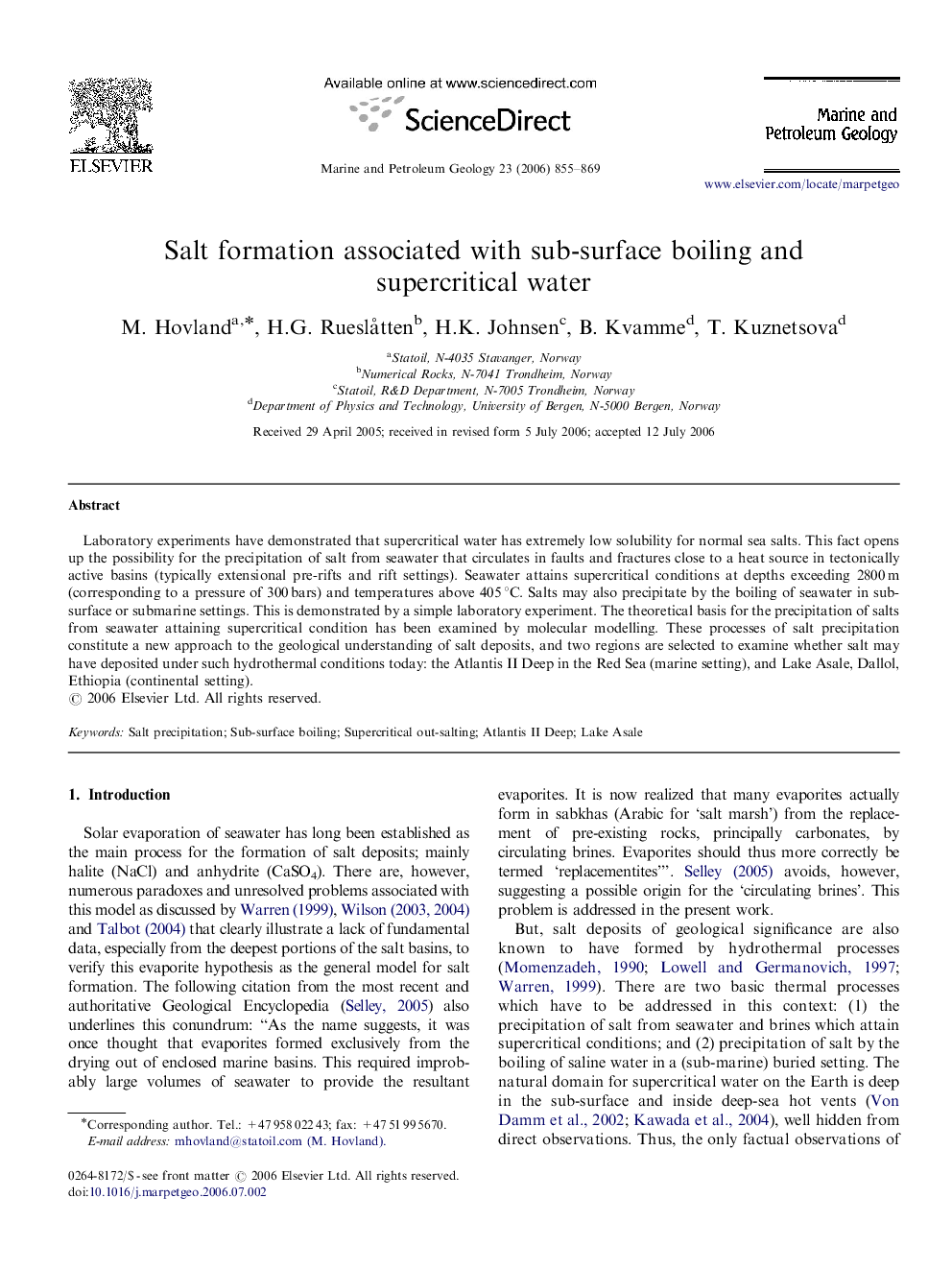| Article ID | Journal | Published Year | Pages | File Type |
|---|---|---|---|---|
| 4696689 | Marine and Petroleum Geology | 2006 | 15 Pages |
Laboratory experiments have demonstrated that supercritical water has extremely low solubility for normal sea salts. This fact opens up the possibility for the precipitation of salt from seawater that circulates in faults and fractures close to a heat source in tectonically active basins (typically extensional pre-rifts and rift settings). Seawater attains supercritical conditions at depths exceeding 2800 m (corresponding to a pressure of 300 bars) and temperatures above 405 °C. Salts may also precipitate by the boiling of seawater in sub-surface or submarine settings. This is demonstrated by a simple laboratory experiment. The theoretical basis for the precipitation of salts from seawater attaining supercritical condition has been examined by molecular modelling. These processes of salt precipitation constitute a new approach to the geological understanding of salt deposits, and two regions are selected to examine whether salt may have deposited under such hydrothermal conditions today: the Atlantis II Deep in the Red Sea (marine setting), and Lake Asale, Dallol, Ethiopia (continental setting).
